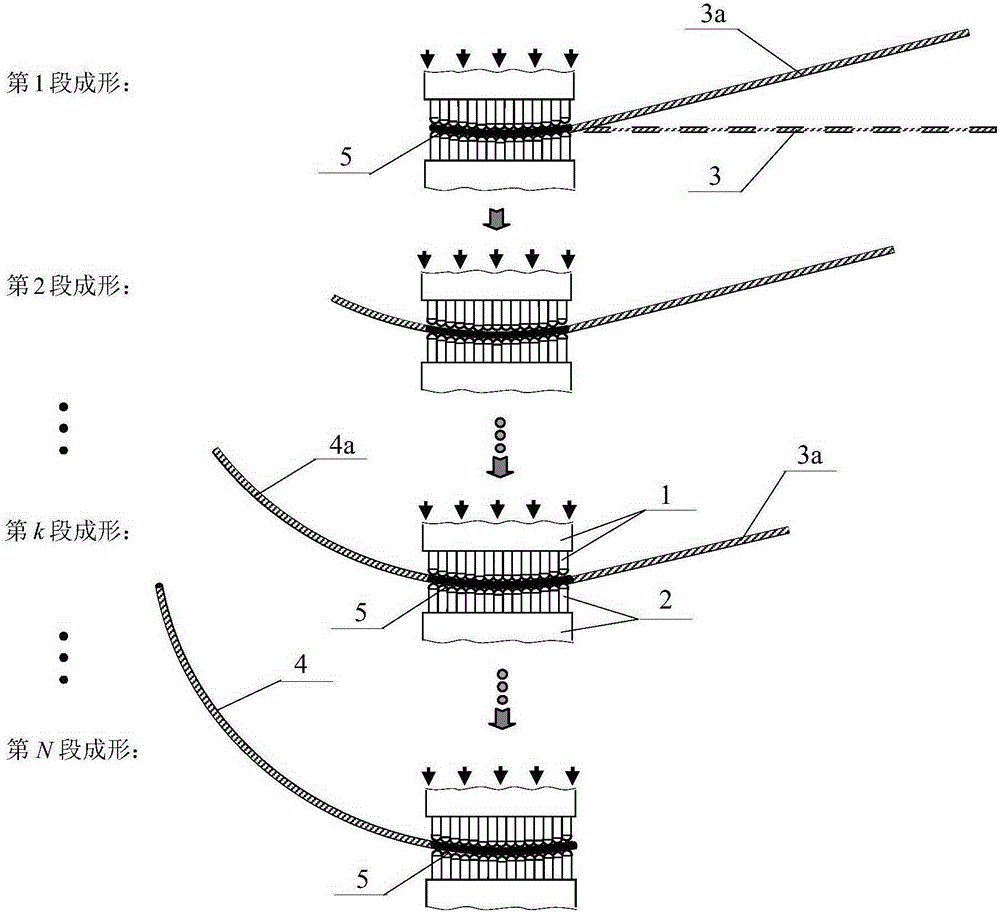Segment-by-segment forming method for large curved surface adopting discrete die
A discrete mold and mold surface technology, applied in the field of metal plastic processing, can solve problems such as technical difficulties, high production costs of large three-dimensional curved surface parts, and high manufacturing costs
- Summary
- Abstract
- Description
- Claims
- Application Information
AI Technical Summary
Problems solved by technology
Method used
Image
Examples
specific Embodiment approach
[0059] The segment-by-section forming method for large curved surfaces involved in the present invention uses a set of discrete upper mold 1 and lower mold 2 with adjustable profiles as forming tools, such as figure 1 As shown, the discrete upper mold 1 and the lower mold 2 are composed of m columns and n rows of basic units 8 arranged regularly. The height of each basic unit can be adjusted, and its top is a spherical cap. The profile surface 9 of the upper mold 1 is formed by the envelope surface of the basic body unit 8 of the upper mold, the profile surface 10 of the lower mold 2 is formed by the envelope surface of the basic body unit 8 of the lower mold, and the profile surface 9 of the discrete mold is The curved surface shape of the upper mold surface 10 is controlled by the height of each basic unit 8 .
[0060] refer to figure 2 and image 3 , the large sheet material 3 is sequentially divided into N forming sections, and each section is subjected to counter-press...
PUM
 Login to View More
Login to View More Abstract
Description
Claims
Application Information
 Login to View More
Login to View More - R&D
- Intellectual Property
- Life Sciences
- Materials
- Tech Scout
- Unparalleled Data Quality
- Higher Quality Content
- 60% Fewer Hallucinations
Browse by: Latest US Patents, China's latest patents, Technical Efficacy Thesaurus, Application Domain, Technology Topic, Popular Technical Reports.
© 2025 PatSnap. All rights reserved.Legal|Privacy policy|Modern Slavery Act Transparency Statement|Sitemap|About US| Contact US: help@patsnap.com



